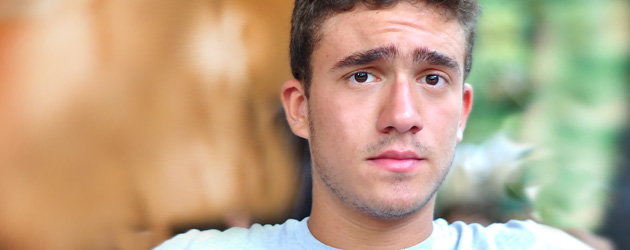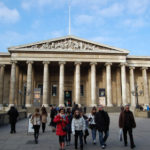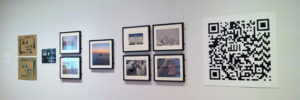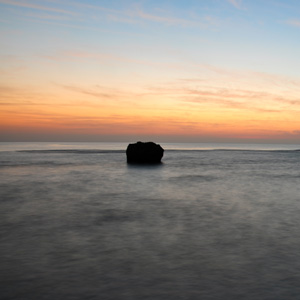
 Teen star photographer Mario El Khoury’s photo (featured below) was selected as one of the winning entries in Saudi Arabia’s ‘Most Competitive Youth Competition’. The photo will be featured in The British Museum from 26 January to 15 April 2012 as part of the exhibition called, ‘Hajj: Journey to the heart of Islam’. The Director of The British Museum, Mr Neil MacGregor, said, ‘This exhibition will enable a global audience to deepen their understanding of the significance and history of the Hajj. In particular, it will allow non-Muslims to explore the one aspect of Islamic practice and faith which they are not able to witness, but which plays such a major part in forming a worldwide Islamic consciousness.’
Teen star photographer Mario El Khoury’s photo (featured below) was selected as one of the winning entries in Saudi Arabia’s ‘Most Competitive Youth Competition’. The photo will be featured in The British Museum from 26 January to 15 April 2012 as part of the exhibition called, ‘Hajj: Journey to the heart of Islam’. The Director of The British Museum, Mr Neil MacGregor, said, ‘This exhibition will enable a global audience to deepen their understanding of the significance and history of the Hajj. In particular, it will allow non-Muslims to explore the one aspect of Islamic practice and faith which they are not able to witness, but which plays such a major part in forming a worldwide Islamic consciousness.’
Mario El Khoury is seventeen years old. He is a Christian who is making a statement about Islam. He started shooting at a very young age, featuring his photos at his website called MariokPhotography.com which you can visit here. The Organisers said that the purpose of the project was to, ‘create, promote and launch a unique competition that challenges youth in the Kingdom of Saudi Arabia to demonstrate their global competitiveness by applying 21st Century Skill-sets while encouraging and fostering creative and innovative pursuits.’

Mario and nine other artists have won a trip to London with a view to visiting a range of installations and galleries. ‘Hajj: Journey to the heart of Islam’ will be the first major exhibition dedicated to the Hajj; which is the pilgrimage to Mecca. This is a focal point of the Muslim faith. Organisers said that the exhibition (comprising competition winners) will examine, ‘the significance of the Hajj as one of the Five Pillars of Islam, exploring its importance for Muslims and looking at how this spiritual journey has evolved throughout history.’ Thanks to sponsors including HSBC, the exhibition will bring together a range of objects from a number of different collections including old and new pieces which reveal the enduring impact of Hajj across the world. The Organisers added, ‘The exhibition will examine three key strands: the pilgrim’s journey with an emphasis on the major routes used across time (from Africa, Asia, Europe and the Middle East); the Hajj today, its associated rituals, and what the experience means to the pilgrim; and Mecca, the destination of Hajj, its origins and importance.’
PILGRIMS CONVERGE LIKE WATER
 Mario’s winning entry was this photo which he called, ‘Pilgrims converge like water.’ Here is Mario’s description of his photograph: As a non-Muslim seventeen-year-old, I was born (and have always lived) in the heart of Islam. I am privileged to travel far and wide, and in so doing, I have observed that people tend to fear the unknown. For this reason, I would like to help non-Muslims to better understand the essence of the Hajj and the enriching spiritual journey to Mecca.
Mario’s winning entry was this photo which he called, ‘Pilgrims converge like water.’ Here is Mario’s description of his photograph: As a non-Muslim seventeen-year-old, I was born (and have always lived) in the heart of Islam. I am privileged to travel far and wide, and in so doing, I have observed that people tend to fear the unknown. For this reason, I would like to help non-Muslims to better understand the essence of the Hajj and the enriching spiritual journey to Mecca.
This photograph represents the ‘sense of community’ that pilgrims, from every corner of the world, feel when they converge around the Kaaba, like droplets of water around the rock. Water droplets, which come from every ocean, are like the Pilgrims who unite in a common belief. Together, there is strength. Like the water, the Pilgrims will eventually disperse — spreading their goodwill back into their communities.
A study in ‘Estimating the Impact of the Hajj: Religion and Tolerance in Islam’s Global Gathering’, directed by John F. Kennedy School of Government, found that Hajjis speak of ‘peaceful coexistence, equality, and harmony’. Water can be said to mirror these attributes, because it gives life, it nourishes, and it is the epitome of brotherhood where each droplet (like each Muslim) is a valuable entity, made even more precious when it unites to form the vast dynamic ocean. Muslims, like the ocean, derive great power when they work together to foster the values of respect, within the warmth of a loving family and a supportive community.
Malcolm X (the African American Muslim Minister and human-rights activist) said that Islam is, ‘the one religion that erases from its society the race problem’. When he performed the Hajj, he was amazed that Hajjis included blue-eyed blondes and black-skinned Africans. He said, ‘…we were all participating in the same ritual, displaying a spirit of unity and brotherhood that my experiences in America had led me to believe never could exist between the white and the non-white’.
As a Lebanese Christian living in Saudi Arabia, I enjoy a multi-cultural, multi-religious, and multi-lingual environment. I am fortunate to have been surrounded by Muslims who, as my friends, have taught me the importance of the Hajj. In turn, I hope that my photograph will speak to non-Muslims in ways that help them to appreciate the beauty of this Pilgrimage.
In this photograph, I did not use any filters because I wanted to retain the darkness and dullness, as metaphors for life’s ‘ups and downs’. Not all things on Earth are bright and colourful. Pollution exists around us, and within us. This is why the cleansing power of the water also represents the cleansing power of the Hajj — a spiritual journey that helps Muslims to clear their mind and to calm their heart, as they ask God (who is solid and strong, represented by the formidable rock) to remove the pollution from their daily life so as to emerge as better humans.
As Mario explains on his website, ‘Humans criss-cross this Earth while generating trillions of events, simultaneously. Then, at lightening speed, everything passes, and is gone forever. You cannot be in more than one place at a time. Therefore, unless you were there, you will never know what took place. As a photographer, my job is to slow things down and freeze them in time. I set out to capture moments — very small moments, so that I can bring you a snapshot of what happened, when you weren’t looking.’
This is a young man who is fully engaged in his craft. Forty years from now, when the whole world has recognised him as a giant of art and photography, commentators will be mentioning this special milestone, noting that at the age of seventeen (and he only just turned seventeen) his work was featured at The British Museum. In a world where billions of people take trillions of photos, its good to see such exhibitions. They are culturally relevant, and artistically necessary. For Mario, this is yet another accolade (and he ought to be getting used to them by now). Mario is off to London soon, having just returned from Paris. He gets around. And he just turned seventeen. Amazing.
I asked Mario how old he was when he first handled a camera. He said, ‘I was so young, that I really can’t remember.’ A common question that Mario’s friends ask him is, which of his many photos he would consider to be his best. He always replies, ‘Tomorrow’s photo’. I asked Mario about this response, and he explained that life is all about evolution and that the world is all about change. He added, ‘As I grow older and mature, I see the world in a different light. New things amaze me. I see more, and for this reason, I feel a sense of urgency to capture more. Tomorrow’s surprises always seem more enticing than yesterday’s story, because news and newness is captivating and tormenting. The new deserves the limelight especially when it is heralded by a sense of curiosity. It commands our attention.’
You can stay in touch with Mario at his Facebook page.
Mario’s official website is here.



Comments are closed.